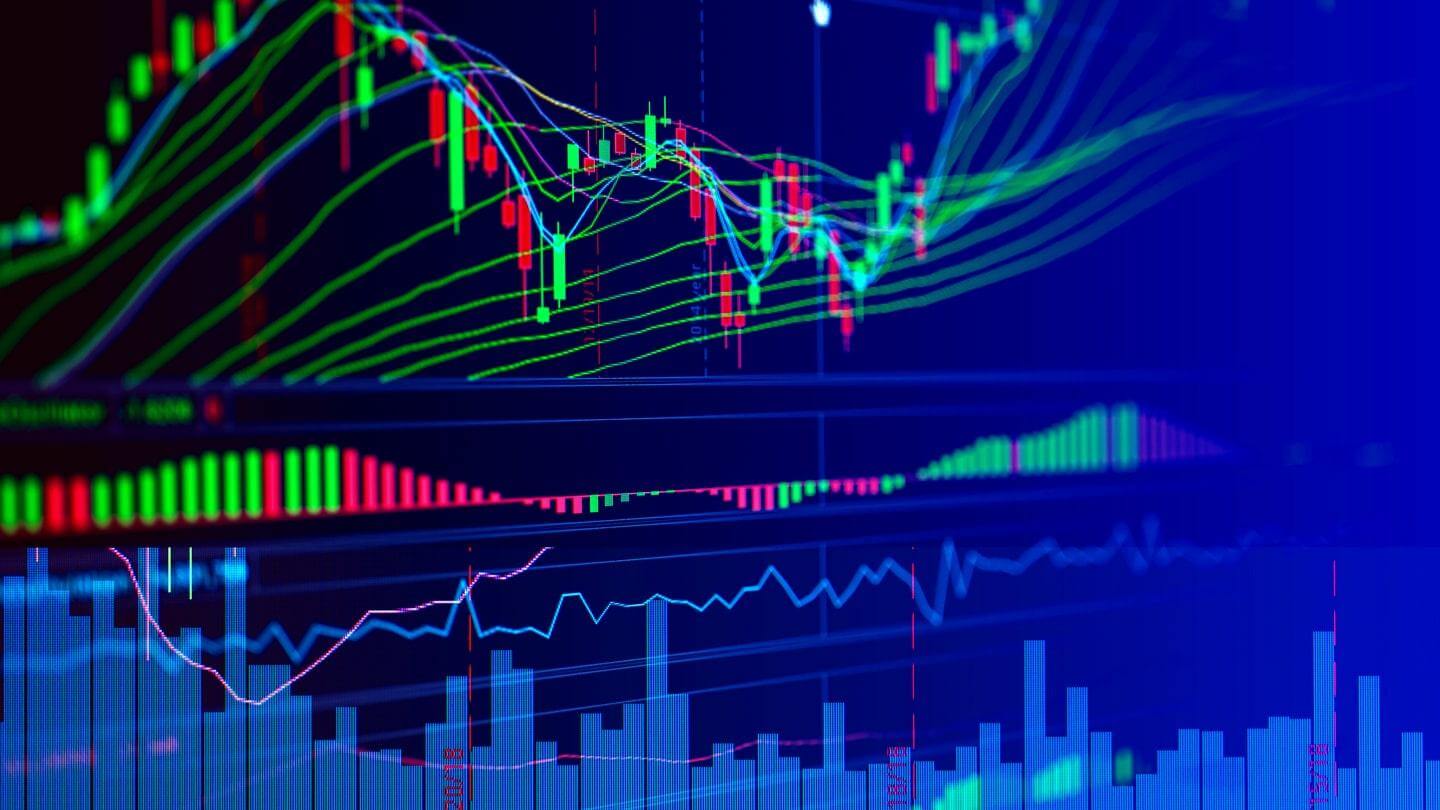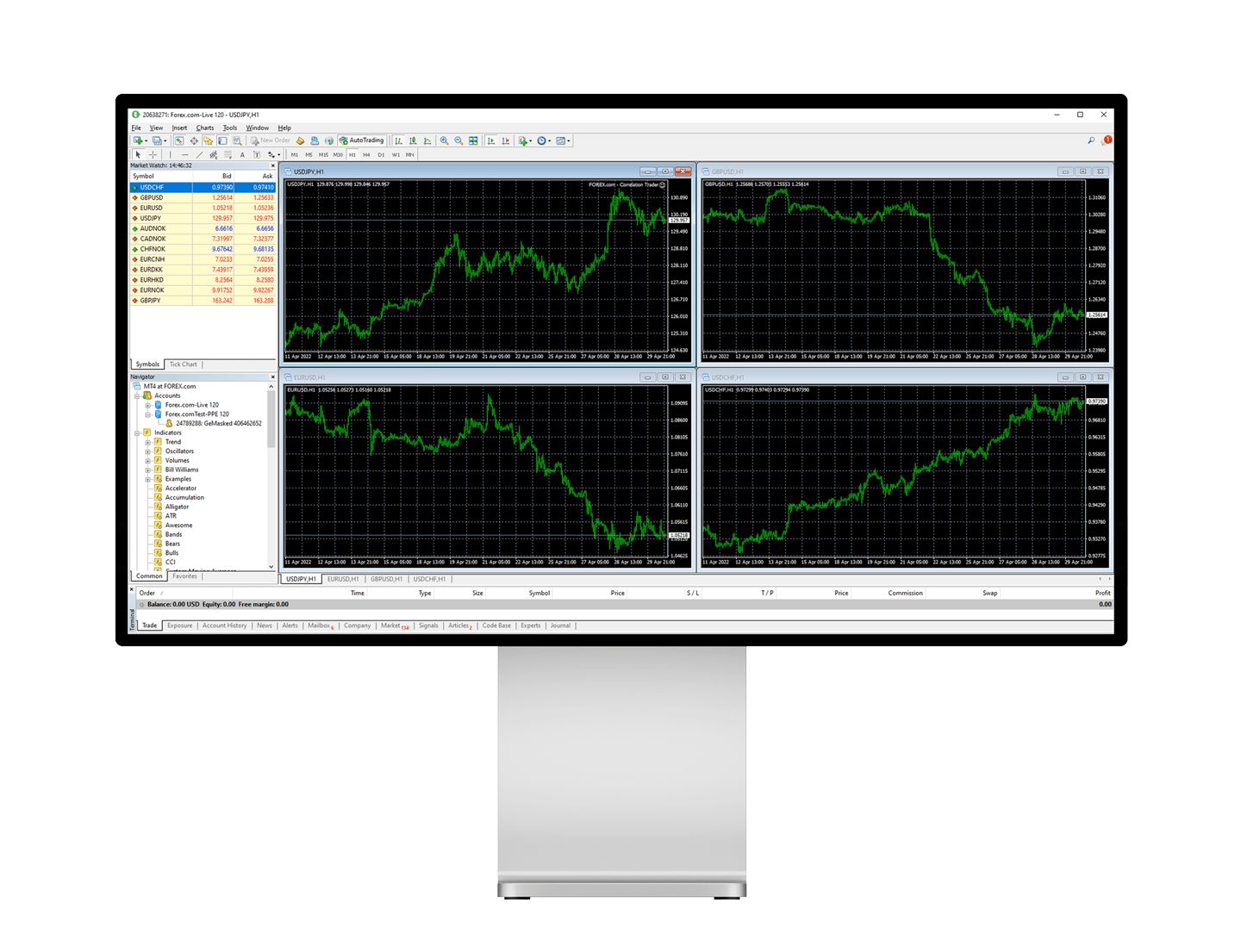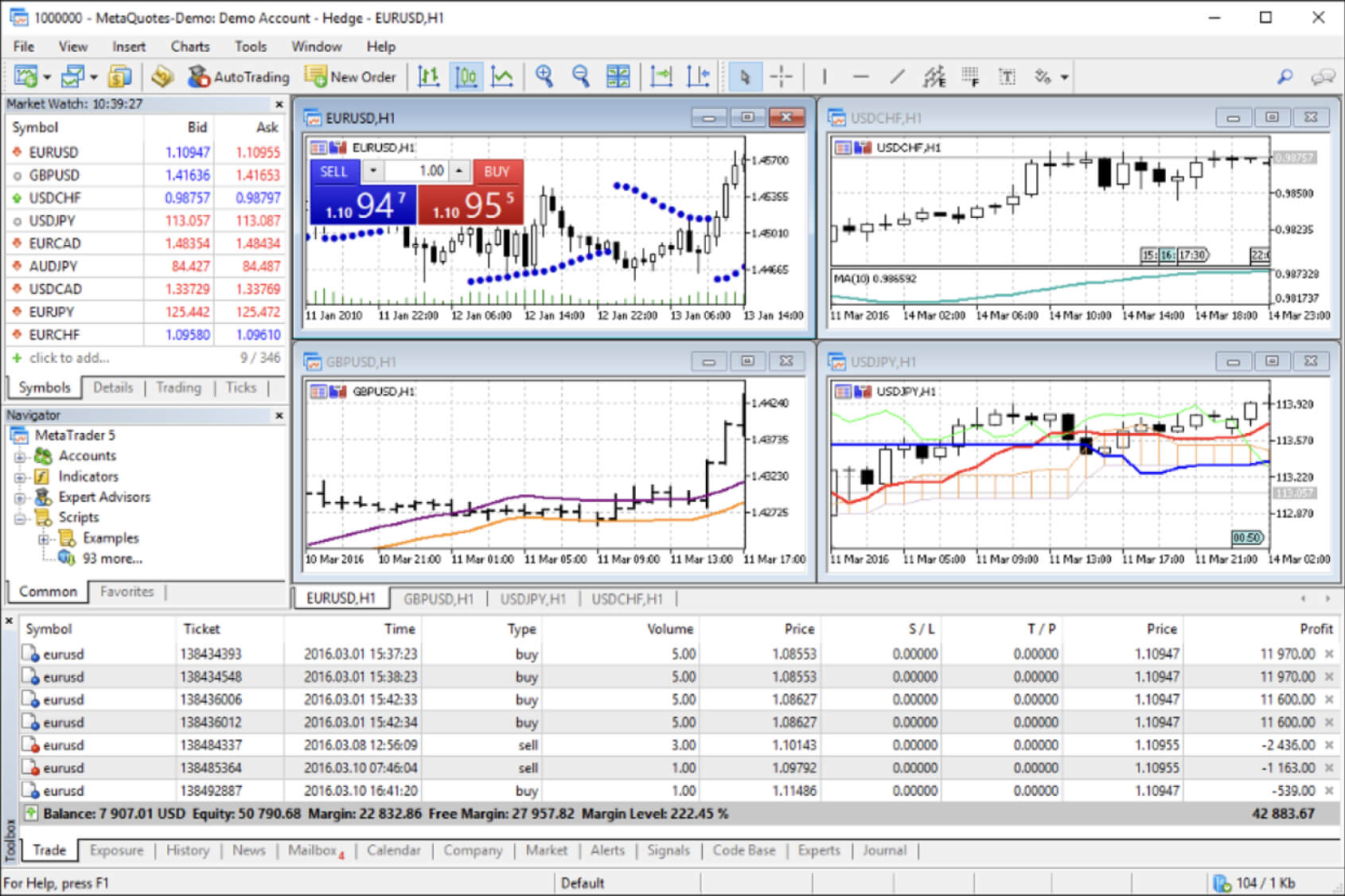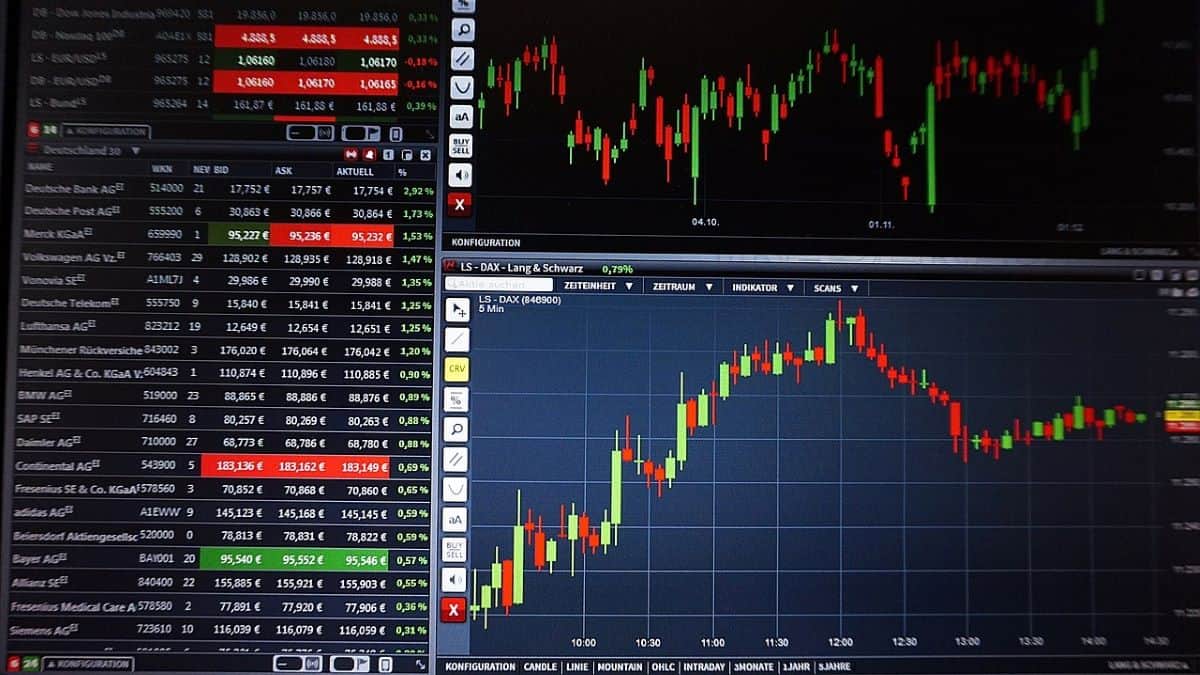Introduction
Welcome to the world of trading! If you’re new to the financial markets, you may have come across the term “EA” and wondered what it stands for and how it relates to trading. EA, which stands for Expert Advisor, is a powerful tool used by traders to automate trading processes and execute trades based on pre-defined rules and strategies.
In this article, we will explore what an EA is, how it works, and the advantages and disadvantages of using one in your trading journey. Whether you’re a beginner looking to streamline your trading activities or an experienced trader seeking to optimize your strategies, understanding EAs can significantly enhance your trading experience.
EAs are computer programs designed to analyze the market, identify trade opportunities, and execute trades automatically on behalf of the trader. They are built with complex algorithms that enable them to monitor multiple financial instruments, analyze historical data, and even react to real-time market conditions. The automation aspect of EAs eliminates the need for manual trading and allows traders to take advantage of opportunities around the clock, even when they’re away from their computers.
Using an EA comes with its own set of advantages. First and foremost, it removes human emotions from the trading equation. By relying on predetermined rules and strategies, EAs ensure that trades are executed based on logic and not influenced by fear, greed, or other emotional factors. This can lead to more consistent trading results and reduced instances of impulsive and irrational decision-making.
Additionally, EAs can save traders valuable time and effort. With automated trading, you no longer need to constantly monitor the markets or sit in front of your computer for hours on end. EAs can scan the markets, analyze data, and execute trades much faster than a human trader, allowing you to free up time for other important tasks or simply enjoy a better work-life balance.
However, it’s important to acknowledge the potential drawbacks of using EAs as well. One of the main concerns is the risk of relying solely on automated systems. While EAs are designed to follow specific rules, they may not always adapt to sudden market changes or unforeseen events. Therefore, it is crucial to monitor and adjust your EA’s settings regularly to ensure it aligns with the current market conditions and your trading goals.
In the next sections, we will delve deeper into how EAs work, the different types of EAs available, factors to consider before using an EA, and popular platforms and websites where you can find EAs. This comprehensive guide will equip you with the knowledge and insights necessary to make informed decisions about integrating EAs into your trading strategy.
What is an EA in Trading?
An EA, or Expert Advisor, is a software program that operates within a trading platform to automate trading activities. It is specifically designed to analyze market data, identify trading opportunities, and execute trades based on pre-configured rules and parameters. EAs are commonly used in the forex market but can also be applied to other financial markets such as stocks, commodities, and cryptocurrencies.
In essence, an EA acts as a trading robot, executing trades on behalf of the trader without the need for manual intervention. The trader sets the criteria and conditions for trade entry and exit, and the EA will monitor the market and execute the trades accordingly. This automation eliminates the need for the trader to constantly monitor the markets, making it an attractive option for traders who have limited time or prefer a more hands-off approach.
EAs are built with a set of predefined rules and strategies that guide their decision-making process. These rules can be based on technical indicators, price patterns, mathematical algorithms, or a combination of these factors. Traders have the flexibility to customize and fine-tune these rules to align with their specific trading objectives and risk tolerance.
EAs can provide several benefits to traders. First and foremost, they remove the emotional bias often associated with manual trading. Emotions such as fear and greed can lead to impulsive and irrational trading decisions, resulting in poor performance. EAs, on the other hand, execute trades based solely on the programmed rules, preventing emotions from interfering with the trading process.
Another advantage of using an EA is its ability to execute trades at high speeds. EAs can swiftly analyze market data, identify trade setups, and execute trades automatically. This can be particularly advantageous in fast-moving markets where price movements occur rapidly. EAs can capitalize on trading opportunities that may be missed by human traders due to delays in manual order placement.
Additionally, EAs can help traders overcome the limitations of human capacity. The forex market operates 24/5, and it can be challenging for a trader to stay actively engaged in trading throughout the entire trading session. EAs, on the other hand, can operate continuously without the need for breaks or sleep. They can monitor the markets, execute trades, and manage positions even when the trader is not available.
However, it’s worth noting that EAs are not a guaranteed path to success in trading. Market conditions can change, and past performance does not guarantee future results. It is essential for traders to carefully select and test EAs before deploying them in live trading. Regular monitoring and adjustment of the EA’s settings may also be necessary to ensure its performance aligns with the current market dynamics.
In the following sections, we will explore how EAs work, the different types of EAs available, factors to consider before using an EA, and popular platforms and websites where you can find EAs. By understanding the intricacies of EAs, you can make informed decisions on how to integrate them into your trading strategy and potentially enhance your trading experience.
Advantages of using an EA
Using an Expert Advisor (EA) in your trading activities can offer numerous advantages that can enhance your overall trading experience. Here are some of the key benefits of utilizing an EA:
- Emotion-free trading: One of the biggest advantages of using an EA is the elimination of emotional bias from the trading process. Emotions such as fear and greed can often cloud judgment and lead to impulsive and irrational trading decisions. EAs, on the other hand, operate based on pre-defined rules and parameters, removing human emotions from the equation and ensuring a more disciplined and consistent approach to trading. This can lead to improved trading performance and reduced instances of costly trading mistakes.
- Speed and efficiency: EAs are capable of analyzing market data, identifying trade opportunities, and executing trades at lightning-fast speeds. This is especially beneficial in markets that experience rapid price movements, such as the forex market. EAs can react to market conditions quickly and take advantage of trading opportunities as they arise. Additionally, EAs can monitor multiple financial instruments simultaneously, something that would be nearly impossible for a human trader to achieve manually.
- 24/7 trading: The forex market operates 24 hours a day, five days a week, which can make it challenging for traders to monitor the market continuously. EAs can operate round the clock without the need for human intervention. They can monitor market conditions, execute trades, and manage positions even when the trader is asleep or away from the trading platform. This ensures that no trading opportunities are missed, even during non-traditional trading hours.
- Backtesting and optimization: EAs can be extensively backtested using historical market data, allowing traders to assess the viability and performance of their trading strategies. This process helps to identify any flaws or areas for improvement in the EA’s algorithm. Traders can then optimize their EA by adjusting parameters, rules, or indicators, and test its performance under different market conditions. This iterative process of backtesting and optimization can significantly enhance the effectiveness of the EA and increase the probability of success in live trading.
- Reduced workload: Trading can be a demanding and time-consuming activity, requiring constant attention and analysis. EAs can alleviate some of the workload by automating repetitive tasks such as market scanning and trade execution. Traders no longer need to spend hours monitoring the markets or manually entering trades. Instead, they can focus on high-level aspects of trading, such as strategy development and risk management, while the EA handles the execution side of the process. This allows for a more efficient use of time and can lead to improved trading productivity.
Overall, incorporating an EA into your trading strategy can provide significant advantages, including emotion-free trading, speed and efficiency, 24/7 trading capabilities, backtesting and optimization opportunities, and reduced workload. However, it’s important to note that EAs are not foolproof and should be used with careful consideration. Traders must select and test their EAs properly, continually monitor their performance, and be ready to make adjustments as needed. By harnessing the power of EAs effectively, traders can enhance their trading results and potentially achieve greater success in the financial markets.
Disadvantages of using an EA
While there are numerous advantages to using an Expert Advisor (EA) in trading, it is important to consider the potential downsides as well. Here are some of the key disadvantages of relying solely on an EA in your trading activities:
- Limited adaptability: EAs operate based on pre-programmed rules and parameters. While these rules can be fine-tuned and optimized, they may not always adapt effectively to sudden market changes or unforeseen events. Market conditions can be dynamic and complex, and EAs may struggle to navigate through volatile or uncertain periods. Traders need to ensure that their EAs are regularly monitored and adjusted to keep up with evolving market conditions.
- Dependency on historical data: EAs rely on historical market data to analyze and make trading decisions. While backtesting can provide valuable insights into how an EA may have performed in the past, it does not guarantee future success. Market conditions can shift, and strategies that have worked well historically may not work as effectively in the present or future. It is crucial to monitor the performance of the EA in real-time and be ready to make adjustments or even disable the EA if it is underperforming or not adapting to current market conditions.
- Technical failures: EAs are software programs, and like any software, they can experience technical issues or malfunctions. Connection problems, system crashes, or software bugs may result in missed trading opportunities or unintended trade executions. Traders need to have contingency plans in place to address potential technical failures and must regularly update and maintain the EA’s software to minimize the risk of such issues.
- Lack of human judgment: EAs are algorithm-based systems that operate solely on predefined rules and parameters. They lack the human element of judgment and intuition, which can play a crucial role in certain trading scenarios. There may be instances where human discretion and decision-making are necessary to navigate through complex market conditions or unforeseen events. Relying solely on an EA may limit your ability to exercise critical thinking and adaptability in fast-changing market environments.
- Over-optimization and curve fitting: When optimizing an EA using historical data, there is a risk of over-optimization or curve fitting. This occurs when the EA is excessively fine-tuned to fit past market data, but it performs poorly in live trading due to its lack of adaptability. Over-optimization can lead to false expectations and may result in significant losses once the EA is deployed in real-time trading conditions. Traders must strike a balance between optimization and adaptability to avoid falling into the trap of over-optimization.
It is important to approach the use of EAs with caution and understanding of their limitations. While they offer automation, speed, and efficiency, traders need to be aware of the potential drawbacks such as limited adaptability, dependency on historical data, technical failures, lack of human judgment, and the risk of over-optimization. Incorporating EAs into your trading strategy should be done alongside careful monitoring and analysis to ensure that the EA’s performance aligns with your trading goals and the current market conditions.
How does an EA work?
Expert Advisors (EAs) are software programs that operate within trading platforms and automate trading activities. EAs work by analyzing market data, identifying trade opportunities, and executing trades based on predetermined rules and parameters. Let’s delve into the key components and processes involved in the functioning of an EA.
The first step in using an EA is programming or configuring it with the necessary rules and strategies. These rules can be based on technical indicators, price patterns, mathematical algorithms, or a combination of various factors. Traders have the flexibility to customize these rules based on their trading preferences and objectives. Once the rules and parameters are defined, the EA is ready to be applied to the charts within the trading platform.
Once the EA is active, it starts monitoring market data in real-time. It can collect information such as price movements, market trends, volume, and any other relevant data needed to generate trading signals. The EA analyzes this data using its programmed rules and strategies to determine potential trade setups. When a trade signal is identified, the EA can automatically trigger a trade order, including the entry price, position size, and stop loss and take profit levels.
The execution of trades is one of the primary functions of an EA. It can place trades in the market directly, without requiring manual intervention. EAs have the ability to communicate with the trading platform and place orders according to the predefined parameters. These orders can be sent to the broker’s server for execution. EAs can also manage open positions by adjusting stop loss and take profit levels, trailing stops, or implementing other risk management techniques as per the trader’s instructions.
EAs continuously monitor the trades they have executed to ensure they are aligned with the market conditions and the defined rules. If any changes occur that contradict the EA’s rules, it can modify or close the trades accordingly. For example, if the market conditions change and the initial trade signal is no longer valid, the EA may decide to exit the trade to mitigate potential losses or capture profits based on a modified set of rules.
It’s worth noting that the functionality and capabilities of EAs can vary based on the specific trading platform and programming language being used. Different platforms may have their proprietary languages, such as MQL4 and MQL5 for MetaTrader, or other languages like Python or C++ in some cases. Traders with programming knowledge can even develop their own custom EAs to suit their unique trading strategies and preferences.
EAs offer traders the advantage of automation, allowing them to execute trades based on predefined rules without the need for constant monitoring. The ability to combine technical analysis, indicators, and trading strategies within an EA provides a powerful tool for traders seeking efficiency and consistency in their trading activities.
In the following sections, we will explore different types of EAs, factors to consider when using an EA, and popular platforms and websites where you can find EAs. By understanding how EAs work and how to leverage their capabilities effectively, traders can enhance their trading strategies and potentially achieve better trading results in the financial markets.
Different types of EAs
Expert Advisors (EAs) come in various types, each designed to cater to different trading styles, strategies, and market conditions. Here are some of the common types of EAs that traders can utilize:
- Trend-following EAs: These EAs are programmed to identify and follow trends in the market. They aim to capitalize on the continuation of an established trend by entering trades in the direction of the trend. Trend-following EAs often use technical indicators such as moving averages, trendlines, or oscillators to identify trend strength and potential entry or exit points.
- Mean reversion EAs: Mean reversion is a trading strategy based on the assumption that prices will eventually revert to their mean or average value after deviating from it. Mean reversion EAs look for overbought or oversold conditions in the market and enter trades with the expectation of price returning to its average level. These EAs often use indicators like Bollinger Bands, RSI, or the Stochastic Oscillator to identify potential reversal points.
- Breakout EAs: Breakout trading involves capitalizing on price movements after a period of consolidation or range-bound trading. Breakout EAs monitor price levels or chart patterns and enter trades when the price breaks out of the established range. These EAs may use indicators like support and resistance levels, channels, or chart patterns like triangles or rectangles to identify potential breakout points.
- Scalping EAs: Scalping is a short-term trading strategy that aims to profit from small price movements. Scalping EAs are designed to enter and exit trades quickly, often within seconds or minutes, to capture small profits multiple times throughout the trading session. These EAs typically have high-frequency trading capabilities and may use indicators like moving averages or tick data to identify short-term price fluctuations.
- Grid trading EAs: Grid trading involves opening multiple trades at predefined intervals or price levels, creating a grid-like pattern on the charts. Grid trading EAs take advantage of price oscillations within a range. These EAs buy at lower levels and sell at higher levels or vice versa, aiming to profit from price reversals within the established grid. Grid trading EAs often employ dynamic lot sizing and hedging techniques to manage risk.
- Martingale EAs: Martingale is a money management technique where trade position sizes are increased after consecutive losses, with the aim of recovering previous losses when a winning trade is made. Martingale EAs double the position size after each loss to potentially recoup losses quickly. While this approach can be profitable in certain market conditions, it also carries increased risk, and proper risk management and careful consideration should be applied when using Martingale EAs.
These are just a few examples of the different types of EAs available. Traders should choose an EA that aligns with their trading goals, risk tolerance, and preferred trading style. Additionally, it is important to thoroughly backtest and validate the performance of an EA before using it in live trading. This ensures that the EA’s strategy and parameters are well-suited to the market conditions and trader’s objectives.
It is worth noting that some EAs may combine different elements and strategies to create a hybrid approach. Additionally, traders can customize and modify existing EAs or even develop their own EAs to meet their specific requirements. The key is to select an EA that complements your trading strategy and risk management approach, and to regularly assess and adapt it as market conditions evolve.
In the following sections, we will examine factors to consider before using an EA, popular platforms and websites for finding EAs, and provide additional insights to help traders make informed decisions about integrating EAs into their trading journey.
Factors to consider before using an EA
Before integrating an Expert Advisor (EA) into your trading strategy, it is essential to consider several factors that can impact its effectiveness and your overall trading experience. Here are some key factors to keep in mind:
- Strategy validation: Thoroughly assessing and validating the strategy and performance of an EA is crucial. Backtest the EA using historical data to evaluate its profitability, risk exposure, and drawdowns. Additionally, perform forward testing in a demo account to ensure its performance remains consistent in real-time market conditions. By verifying the EA’s strategy, you gain confidence in its potential effectiveness.
- Market conditions: Consider the suitability of the EA for prevailing market conditions. Different EAs may perform better in specific market conditions, such as trending or ranging markets. Evaluate whether the EA’s strategy aligns with the current market environment and adjust its parameters or consider alternative EAs accordingly.
- Risk management: Assess the risk management features of the EA. Ensure it incorporates appropriate measures such as stop loss, take profit levels, and position sizing to manage risk effectively. Managing risk is crucial to protect capital and prevent significant drawdowns or losses.
- Monitoring requirements: Determine the level of monitoring and oversight required for the EA. While EAs can automate trading, regular monitoring is still necessary to ensure their performance aligns with expectations and market conditions. Consider whether you have the time and resources to monitor the EA’s performance and make adjustments as needed.
- Account compatibility: Check if the EA is compatible with your trading account type, platform, and broker. Ensure that the EA is designed to work seamlessly with your specific trading environment to avoid any operational or compatibility issues.
- Drawdown tolerance: Evaluate your tolerance for drawdowns, as some EAs may experience periods of losses or drawdowns before generating profits. Consider your risk appetite and ensure the EA’s historical drawdowns align with your comfort level. It is important to have realistic expectations and a long-term perspective when assessing drawdowns.
- Technical support and updates: Consider the availability of technical support and updates for the EA. As market conditions change or new trading opportunities arise, updates may be required to optimize the EA’s performance. Evaluate the developer’s reputation and responsiveness to ensure ongoing support and updates are available if needed.
- Personalization and customization: Determine if the EA allows for customization to fit your trading preferences and objectives. Some EAs come with built-in parameters that can be adjusted, while others offer more flexibility for customization. Assess whether the EA’s parameters can be fine-tuned or modified to better align with your trading strategy.
It is crucial to thoroughly research and evaluate these factors before implementing an EA into your live trading. This will help you choose a suitable EA that matches your trading goals, risk tolerance, and market conditions. It’s also important to remember that no EA is guaranteed to be profitable in all market conditions, and ongoing monitoring and adjustment are necessary to adapt to changing market dynamics.
In the following sections, we will explore popular platforms and websites where you can find EAs, as well as provide additional insights and tips to assist you in making informed decisions about integrating EAs into your trading journey.
Popular EA platforms and websites
When it comes to accessing Expert Advisors (EAs) for your trading needs, there are several popular platforms and websites that offer an extensive selection to choose from. These platforms and websites provide a range of EAs developed by skilled programmers and traders. Here are some of the well-known platforms and websites known for their quality EAs:
- MetaTrader Market: The MetaTrader Market is a popular platform for traders using the MetaTrader 4 (MT4) and MetaTrader 5 (MT5) trading platforms. It offers a vast collection of EAs, indicators, and other trading tools. Traders can browse through a variety of EAs with different strategies, performance records, and user ratings. The MetaTrader Market provides a secure and straightforward way to purchase and download EAs directly into your trading platform.
- MQL5.com: MQL5.com is an online community and marketplace for traders using the MetaTrader 5 platform. It offers a wide range of EAs, indicators, scripts, and other trading tools. Traders can find EAs developed by professional programmers and share their trading strategies with the community. MQL5.com provides a convenient platform for purchasing, testing, and downloading EAs directly into your MetaTrader 5 platform.
- Myfxbook: Myfxbook is a popular online platform offering a comprehensive suite of tools for traders, including a marketplace for EAs. Traders can find a diverse range of EAs with verified track records, live performance stats, and user reviews. Myfxbook allows traders to monitor the performance of EAs in real-time and provides a transparent platform for purchasing and testing EAs.
- ForexFactory: ForexFactory is a well-known online forum and resource hub for forex traders. It provides a dedicated section where traders can discuss and share EAs. Traders can find a variety of EAs developed by community members, along with user reviews and discussions on their performance. ForexFactory is a valuable platform for discovering and accessing EAs created by experienced traders.
- GitHub: GitHub is a popular online platform for software development, and it also hosts a wide range of EAs. Traders can explore GitHub repositories to find open-source EAs shared by developers and traders. GitHub allows you to review the source code, contributions from the community, and download the EA for personal use. It provides a platform for collaboration and customization as traders can modify the EA’s code according to their requirements.
- Commercial EA websites: Many developers and trading companies have their own websites where they offer their proprietary EAs for sale. These websites often provide detailed information about the EAs, including performance history, backtesting results, and user testimonials. Some examples of websites offering commercial EAs include Forex Robotron, Forex Flex EA, and Forex Diamond EA.
When selecting EAs from these platforms or websites, it is important to conduct due diligence. Consider factors such as the EA’s track record, user reviews, and performance statistics. It is also recommended to test the EA thoroughly in a demo account before using it in live trading to ensure compatibility with your trading style and objectives.
Additionally, some traders prefer to develop their own EAs based on their unique trading strategies. Platforms such as MetaTrader provide robust development environments where traders can code and create their custom EAs using programming languages like MQL4 or MQL5. This approach allows for maximum customization and aligns the EA precisely with the trader’s preferences.
As always, exercise caution and consider your risk tolerance when using EAs from any platform or website. Regularly monitor the performance of your chosen EA and be prepared to make adjustments as market conditions change. By leveraging the resources and options available through popular EA platforms and websites, you can find the EAs that suit your trading style and potentially enhance your trading journey.
Conclusion
Expert Advisors (EAs) can be powerful tools for traders looking to automate their trading activities and improve their trading efficiency. By utilizing EAs, traders can eliminate emotional bias, execute trades at high speeds, operate 24/7, and optimize their trading strategies through backtesting and optimization. However, it’s important to consider the drawbacks of EAs, such as their limited adaptability, dependency on historical data, technical failures, lack of human judgment, and the risk of over-optimization.
Before using an EA, traders should thoroughly validate its performance, assess its alignment with prevailing market conditions, and implement appropriate risk management measures. Factors like drawdown tolerance, monitoring requirements, account compatibility, and customization options should also be considered. Additionally, popular EA platforms and websites like MetaTrader Market, MQL5.com, Myfxbook, ForexFactory, GitHub, and commercial EA websites offer a wide range of EAs for traders to choose from.
It’s important to remember that EAs are not a guaranteed pathway to success. They should be used as tools to enhance trading strategies, complemented by continuous monitoring, and adaptation to changing market conditions. Regular evaluation of an EA’s performance, adjustment of parameters, and risk management is essential for long-term success.
Ultimately, the integration of an EA into a trading strategy should be a thoughtful and well-informed decision. Traders should have a clear understanding of the risks and benefits associated with using EAs and should choose EAs that align with their trading goals, risk tolerance, and market conditions. By leveraging the capabilities of EAs effectively, traders can potentially enhance their trading experience and increase their chances of success in the financial markets.
























